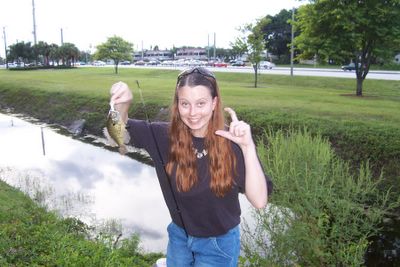
Okapi's at the Miami Metro Zoo. Photo taken 11-26-05 By C. Ashlock.
Kingdom: Animalia
Phylum: Chordata
Class: Mammalia
Order: Artiodactyla
Family: Giraffidae
Genus: Okapia
Status: The okapi is not believed to be in danger, although accurate population assessments are difficult in the dense jungle.
The "okapi" ("Okapia johnstoni") is an unusal animal native to the Ituri Rainforest in central Africa. Although it bears markings very similar to the zebra, it is actually the only living relative of the giraffe. The resemblance it bears to both the zebra and giraffe has led some to believe it is a cross between the two, but it has no relation to the zebra. It is native to the Ituri rain forests situated in the north east of the Democratic Republic of the Congo, and was known only to the local people until 1901. This obscurity led the Society for Cryptozoology to adopt it as an emblem.
Okapis have dark bodies, with striking horizontal white stripes on the back legs, making them resemble zebras from a distance. These markings are thought to be "follow me" markings intended to help young follow their mothers through the dense rain forest, and also serve as camouflage. The body shape is similar to that of the giraffe, except that okapis have much shorter necks. Both species have very long (apx. twelve inches), flexible, blue tongues that they use to strip leaves and buds from trees. The tongue of an okapi is long enough for the animal to wash its eyelids and clean its ears: it is one of the few mammals that can lick its own ears. Male okapis have short, skin-covered horns. They have large ears which help them in detecting its predator, the leopard.
Okapis are 7 to 8 ft (2 to 2.5 m) long, and 5 to 6 ft (1.5 to 2 m) high at the shoulder. Their weight ranges from 465 to 550 lb (200 to 250 kg).
In addition to tree leaves and buds, okapis eat grass, ferns, fruit, and fungi.
Okapis are largely nocturnal and essentially solitary, coming together only to breed. Only one infant is born at a time, weighing around 35 lb (16 kg), after a gestation period of from 421 to 457 days. The young are nursed for up to ten months, and reach maturity at between four and five years of age.
Okapis are unusual in their ability to sleep for only 5 minutes in a 24 hour period and remain at peak alertness.
Okapis have several methods of communicating their territory, including scent glands on each foot that leave behind a tar-like substance that signals their passage and urine marking. Males are protective of their territory, but allow females to pass through their domain for forage.
Okapis are not classified as endangered, but are threatened by habitat destruction and poaching. Conservation work in the Congo includes the continuing study of okapi behavior, and has led to the creation in 1992 of the Okapi Wildlife Reserve. The Congo Civil War threatened both the wildlife and the conservation workers in the Reserve.
The species epithet (johnstoni) is in recognition of the explorer Sir Harry Johnston, who organized the expedition that first acquired an okapi specimen for science from Zaire's Ituri Forest. This is the only place where an okapi can be found in the wild.
Source: http://en.wikipedia.org/wiki/Okapi















